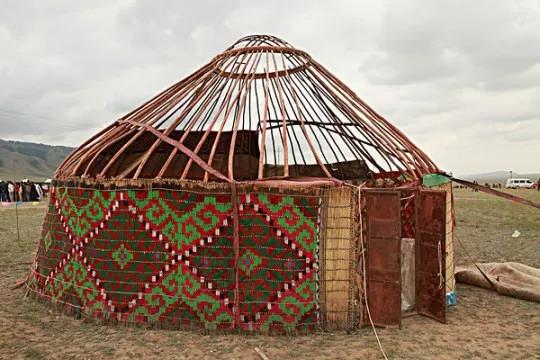Felt house,Museums on the Move
Felt houses are known as delicate museums and "living fossils" ... According to historical records, the history of the felt house can be traced back to BC. Kazakhs in the creation of felt room to absorb the advantages of other ethnic arts at the same time, but also injected their own wisdom, generations of evolution.
Walking into the felt room, unlike the white wool felt on the outside, the inside is colourful and superbly crafted, from wall hangings to floor carpets, from clothes to pillows and quilts, from bed cupboards to curtains, all of them are decorated with unique handcrafts such as embroidery, picking flowers, weaving and so on. The internal structure of the felt house is well organised, with the right hand side of the entrance storing kitchenware and food, the north-east side being the old people's residence, and the young people generally living in the north-west side. The northernmost part is reserved for the most honoured guests or other members of the family. In the middle is the pot rack. The idiom of "The sparrow is small but all its organs are complete" is true.

The main components of a felt house are woolen felt, a red willow fence, wooden poles and woolen hyacinth curtains. The lower part of the house is cylindrical, with a door in one place, and the upper part is domed, with a skylight at the top to let out smoke and air. The lower part is surrounded by straw curtains, and finally the whole room is wrapped in woolen felt.
The difference between a felt house and a yurt lies in the shape of the skeleton's wooden spars, which are curved at the end of a Kazakh felt house and straight in a yurt. The appearance effect of the two structures is also different. Felt room as the wisdom of the herdsmen's products, not only is a clever solution to the problem of food and shelter, but also the impact of the visual art of the place, warm but no loss of simplicity, rugged but no loss of warmth, versatile but no loss of unity.


